- This article is about the Freshwater Ecology macroorganisms. For the event in general, see Water Quality. For Marine and Estuary macroorganisms, see Water Quality/Marine and Estuary Macroorganism List.
The following is a list of all of the macroorganisms that must be identified in the Macro-Flora and Fauna Section.
This list is incomplete. To help complete it please add a table with the following headings to each section:"Importance as Indicators", "Ecology", "Life Cycle", "Feeding Habits", and "Extra information"
Example table:
| Importance as Indicators
|
Ecology
|
Life Cycle
|
Feeding Habits
|
Extra Information
|
| Things that are shown about the quality of water by the presence or absence of the organism
|
General ecology information
|
Information about immature and adult forms of organism
|
(Carnivore/Herbivore/Omnivore)-more information
|
important information about organism not listed in other charts. Not required for all organisms
|
Class 1-Pollution Sensitive
Mayfly
| Importance as Indicators
|
Ecology
|
Life Cycle
|
Feeding Habits
|
Extra Information
|
Picture (Larvae)
|
Picture (Adult)
|
| Mayflies prefer cleaner water, therefore their presence indicates clean water sources.
|
Eaten by many kinds of fish.
|
Incomplete Metamorphosis-Eggs are laid in water and sink to the bottom. Nymphs undergo several molts before emerging as adults
|
Omnivorous-Eat organic debris, such as plankton or diatoms.
|
|

|

|
Caddisfly
| Importance as Indicators
|
Ecology
|
Life Cycle
|
Feeding Habits
|
Extra Information
|
Picture (Larvae)
|
Picture (Adult)
|
| Different species indicate varying levels of pollution.
|
Eaten by many kinds of fish
|
Complete Metamorphosis- Eggs are attached to submerged vegetation, worm-like, soft-bodied larvae enter pupae stage before becoming adults. Adults live for a very short time.
|
Omnivorous-Larvae feed on algae, plant material, and animals, sometimes building nets to catch food.
|
|

|

|
Stonefly
| Importance as Indicators
|
Ecology
|
Life Cycle
|
Feeding Habits
|
Extra Information
|
Picture (Nymph)
|
Picture (Adult)
|
| Indicate fast-moving clean water with much oxygen.
|
Eaten by many species of fish
|
Incomplete Metamorphosis-Eggs are laid on water and sink to the bottom. Nymphs have many molts before reaching adulthood.
|
Usually Carnivorous, sometimes Omnivorous-eat algae, bacteria, and other debris.
|
|

|

|
Dobsonfly
| Importance as Indicators
|
Ecology
|
Life Cycle
|
Feeding Habits
|
Extra Information
|
Picture (Larva)
|
Picture (Adult)
|
| Dobsonflies are only present in very clean environments because they are intolerant of pollution.
|
Eaten by many kinds of fish
|
The dobsonfly undergoes complete metamorphosis.
|
The dobsonfly does not eat in its mature form. Hellgrammites (dobsonfly larvae) consume aquatic insects.
|
Carnivorous, larva form attracted to light, female dobsonfly's bite is painful
|

|

|
Gilled Snails
| Importance as Indicators
|
Ecology
|
Life Cycle
|
Feeding Habits
|
Extra Information
|
Picture
|
Picture (Shell)
|
| Cannot tolerate pollution as they need oxygen rich water
|
May be eaten by fish, ducks, and leeches
|
Lay eggs in a jelly clump under rocks and leaves, may live 2-5 years
|
Feeds on algae
|
Only count live ones when monitoring water quality
|

|

|
Water Penny
| Importance as Indicators
|
Ecology
|
Life Cycle
|
Feeding Habits
|
Extra Information
|
Picture (Larva)
|
Picture (Adult)
|
| Indicate much oxygen and fast-moving waters
|
Eaten by freshwater trout and some insects
|
Complete Metamorphosis-Eggs are laid on undersides of stones. Larvae resemble encrustations on rock
|
Herbivorous-eat plant debris and algae
|
As adults, Water Penny Beetles live on land (or are "terrestrial").
|

|

|
Riffle Beetle
| Importance as Indicators
|
Ecology
|
Life Cycle
|
Feeding Habits
|
Extra Information
|
Picture
|
Picture (Adult)
|
| Indicate clean, oxygen rich, fast-moving bodies of water
|
Eaten by many different kinds of fish
|
Complete Metamorphosis- Eggs are laid underwater on plant material
|
Herbivorous-Eat plant material and diatoms
|
Adults are also aquatic, and have 6 legs.
|

|

|
Water Scorpion
| Importance as Indicators
|
Ecology
|
Life Cycle
|
Feeding Habits
|
Extra Information
|
Picture (Ranatra species)
|
Picture
|
| Indicate slow moving bodies of water. Usually found in areas with little vegetation
|
|
Eggs are laid above the waterline in mud, decomposing plants, or stems of plants or rotting wood. Different species have different ways of supplying air. Go through many molts, but there is little visible difference between them
|
Carnivorous- eat mostly invertebrates, some small fish or tadpoles
|
Also known as Nepidae. Not actually scorpions
|

|

|
Class 2-Moderately Sensitive
Aquatic Sowbug
| Importance as Indicators
|
Ecology
|
Life Cycle
|
Feeding Habits
|
Extra Information
|
Picture
|
| Can cope with organic waste, indicating streams that are beginning to recover from sewage pollution
|
Consume dead and decaying material. Eaten by many vertebrates and invertebrates
|
Grow throughout entire lives, shedding exoskeletons often immature sowbugs look very similar to mature ones, the main difference being the size of the specimen
|
Omnivorous-Bottom feeder that consumes dead animal matter and decaying plants
|
Also known as Isopod.
|
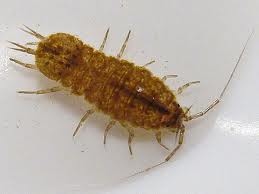
|
Damselfly
| Importance as Indicators
|
Ecology
|
Life Cycle
|
Feeding Habits
|
Extra Information
|
Picture (Nymph)
|
Picture (Adult)
|
| Indicate slow moving water, such as streams, ponds, or lakes.
|
Eaten mainly by fish, birds, larger predatory aquatic insects, and web-building spiders.
|
Molt several times before reaching their adult, winged stage.
|
Carnivorous-immature Damselflies feed on daphnia, mosquito larvae, and other small aquatic organisms. As adults, they feed on mosquitoes, flies, and other small insects.
|
Can be differentiated from dragonflies by the fact that damselflies leave wings parallel to body when at rest
|

|

|
Dragonfly
| Importance as Indicators
|
Ecology
|
Life Cycle
|
Feeding Habits
|
Extra Information
|
Picture(nymph)
|
Picture(adult)
|
| Indicates slow moving water, such as streams, ponds, or lakes.
|
Eaten by birds, spiders, frogs, fish, and even larger aquatic insects.
|
The dragonfly undergoes incomplete metamorphosis during its life cycle. Once it reaches adulthood, it can travel extremely fast.
|
Carnivorous-immature damselflies feed on daphnia, mosquito larvae, and other small aquatic organisms. As adults, they feed on mosquitoes, flies, and other small insects.
|
Can be differentiated from damselflies by the fact that dragonflies leave wings perpendicular to body when at rest. Also, damselflies are smaller than dragonflies.
|

|

|
Scuds
| Importance as Indicators
|
Ecology
|
Life Cycle
|
Feeding Habits
|
Extra Information
|
Picture
|
| Indicate calcium and nutrient-rich water clear of sediments and pollution
|
Eaten by fish, mainly trout
|
Molt regularly throughout life
|
Omnivorous-Eat mostly decaying matter
|
|

|
Crane Fly
| Importance as Indicators
|
Ecology
|
Life Cycle
|
Feeding Habits
|
Extra Information
|
Picture (Adult)
|
| Indicate very clean water
|
Clean up lakes and ponds
|
Complete Metamorphosis- wormlike, thick, brownish larvae. Adults resemble large mosquitoes with larger bodies, but are harmless.
|
Omnivorous-Eat plants and debris, and occasionally small insects. Several species do not eat in the adult phase of their life.
|
Also commonly known as mosquito hawks, though adults usually do not eat mosquitoes. Larvae may occasionally eat mosquito larvae. Larvae are known as leatherjackets.
|

|
Class 3-Moderately Tolerant
Water Mite
| Importance as Indicators
|
Ecology
|
Life Cycle
|
Feeding Habits
|
Extra Information
|
Picture
|
| Open, clean water, sometimes found in pool bottoms
|
|
Complete Metamorphosis
|
Carnivorous-bloodsucker, usually attacks fish or other animals
|
|
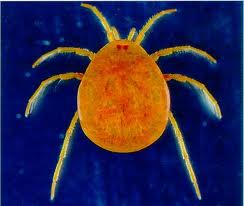
|
Midge
| Importance as Indicators
|
Ecology
|
Life Cycle
|
Feeding Habits
|
Extra Information
|
Picture (Nymph)
|
Picture (Adult)
|
| Indicate poor water quality and are tolerant of pollution
|
|
Complete Metamorphosis-Larvae are very small, wormlike, and green, gold, brown, tan, or black. Adults resemble small mosquitoes. Males have fuzzy antennae.
|
Omnivorous-Eat algae, debris, and insect larvae
|
|
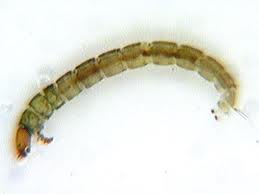
|
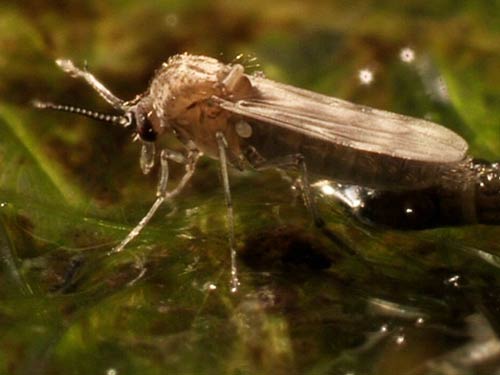
|
Blackfly
| Importance as Indicators
|
Ecology
|
Life Cycle
|
Feeding Habits
|
Extra Information
|
Picture (Larvae)
|
Picture (Adult)
|
| Indicate swift-flowing water and too many nutrients.
|
|
Complete Metamorphosis-Larvae are small, wormlike, and bulbous at one end. When out of water, they fold themselves in half while wiggling; color varies from green, brown, gray, but usually black; length up to 1/3 inch. Adults inflict painful bites on warm-blooded animals.
|
Omnivorous-Eat organic debris and blood.
|
This is the main vector of river blindness in humans.
|

|

|
Flatworm
| Importance as Indicators
|
Ecology
|
Life Cycle
|
Feeding Habits
|
Extra Information
|
Picture
|
| Indicate poor water quality.
|
Eaten by many fish
|
Hermaphroditic-reproduce through penis fencing.
|
Carnivorous-Usually parasitic
|
|
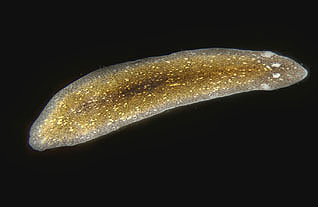
|
Leeches
| Importance as Indicators
|
Ecology
|
Life Cycle
|
Feeding Habits
|
Extra Information
|
Picture
|
| Indicate running water of very poor quality.
|
|
Hermaphroditic-reproduce by reciprocal fertilization. Worm-like; flattened lengthwise and possess a sucker at each end; color is green, black, brown or grey, some with patterns of bright colors of yellow and red; length up to five inches.
|
Omnivorous-Feed on blood and decaying matter.
|
|

|
Class 4-Pollution Tolerant
Air Breathing Snail
| Importance as Indicators
|
Ecology
|
Life Cycle
|
Feeding Habits
|
Extra Information
|
Picture (Shell)
|
| Indicate nutrient enriched conditions and poor water quality.
|
Preyed upon by fish, birds, and some turtles.
|
Opening on left side of shell, brown, gray or black, often with algae growing on the shell; length is up to 1/2 inch.
|
Omnivorous-eat algae, other aquatic plants, and sometimes dead animals.
|
|

|
Deer/Horse Fly
| Importance as Indicators
|
Ecology
|
Life Cycle
|
Feeding Habits
|
Extra Information
|
Picture (Larvae)
|
Picture (Adult)
|
| Tolerant to pollution and found in areas of slow moving water. Horsefly larvae are moderately to very tolerant of pollution. They are generally found in slow-moving waters, though not always.
|
Eaten by wasps, hornets, dragonflies, and kills deer. Larvae are found in ponds, marshes, and the riparian zone of streams. Female adults are pests to warm-blooded animals, because they consume blood. They are particularly active in daytime. Adults are found near freshwater.
|
Both undergo complete metamorphosis. Adults lay eggs on vegetation above the water surface. They live in the water or in moist areas. After hatching, larvae live for one to two years, with six to thirteen stages. In late spring, larvae go to a drier spot and pupate. After a few days, they become adults. Adults live only days to weeks.
|
Larvae of horseflies are predatory, eating other insects, and even small fish and amphibians. They eat by sucking out fluids and organs of their prey. Adult males feed only on nectar. Females feed on blood after mating.
|
Horse flies are mostly between .5 and 1.25 inches. Deerflies are smaller, like houseflies, about .25 to .33 inches. Horseflies have short antennae, and deerflies have long, uniform antennae. Also, horsefly wings are uniform, whereas deerfly wings are striped or patterned. Deerflies are more wasp-like (skinny with small heads and wide wings).
|


|


|
Tubifex
| Importance as Indicators
|
Ecology
|
Life Cycle
|
Feeding Habits
|
Extra Information
|
Picture
|
| Tubifex are considered pollution-tolerant. They are generally found in stagnant water with soft mud bottoms. High numbers are considered indicators of very poor water quality. They can survive in water more polluted and oxygen deprived than almost any other species.
|
Sometimes known as sludge worms, Tubifex live in clusters on the bottom of ponds and streams. They burrow themselves into the mud and live upside down. They wave their bodies in the water to collect oxygen (like frogs, gas exchange can occur through their thin skin). They inhabit sediment in lakes, rivers, and sewer lines. They are detritivores. Tubifex are commonly used for fish food and also eaten by bottom-feeding fish, insects, leeches, and crustaceans.
|
Tubifex are hermaphroditic. After copulation, Tubifex produce egg-cases known as cocoons, which are stored around the clitellum, where the sperm and ova are stored. After a few weeks of development, the young worms emerge and mature usually within a year. Cocoon production occurs in winter to early spring.
|
Tubifex feed on decaying organic matter, detritus, and vegetable matter. They ingest large quantities of mud and then filter out organic debris and can also absorb molecules through their body walls.
|
Also known as sewage worms
|

|
Blood Midge
| Importance as Indicators
|
Ecology
|
Life Cycle
|
Feeding Habits
|
Extra Information
|
Picture
|
| Because blood midge larvae have a lot of hemoglobin, they are better able to survive in low-oxygen, nutrient-rich water. They are classified as pollution-tolerant. They are the most common midge indicators, because they best indicate poor water quality.
|
Blood midge ecology is the same as midge ecology. Larvae and pupae can be food for insects and fish. Adults can be food for bats, birds, and other insects. Larvae clean up the environment. However, blood midge larvae are slightly different. Because they live where there is little oxygen (the hypolinmion), they have few predators. They do compete for space and nutrients, since there can be huge numbers of blood midge larvae living together.
|
Larvae hatch in ten days from eggs laid on plants. After weeks or months of feeding, they pupate, and then days later emerge as adults. As adults, they reproduce and survive only a few days.
|
Larvae primarily feed on algae and other organic debris. Adults usually do not feed.
|
|

|
Class 5-Air Breathing
Whirligig Beetle
| Importance as Indicators
|
Ecology
|
Life Cycle
|
Feeding Habits
|
Extra Information
|
Picture (Larvae)
|
Picture (Adult)
|
| Large numbers of whirligig beetles can indicate moderate water quality. They are classified as air-breathing since they do not rely on underwater oxygen content.
|
Other larger beetles and fish will eat whirligig beetles, which are predators to small organisms. They swim at the surface in groups with a complex social hierarchy.
|
Whirligig beetles undergo complete metamorphosis. Seven to forty eggs are laid in spring in small batches attached to underwater plant leaves. Larvae hatch and grow for several weeks or months. In summer, the larvae pupate above water on a plant. At the end of the summer, the adult will emerge and return to the water, where it spends most of its time.
|
Larvae are rarely seen, but prey on smaller insects. Adults scavenge for floating materials on the surface. They have sensitive antennae that feel vibrations in the water. They eat other aquatic insects.
|
|

|

|
Water Strider
| Importance as Indicators
|
Ecology
|
Life Cycle
|
Feeding Habits
|
Extra Information
|
Picture
|
| Water striders are air breathing. Large numbers can indicate moderate, or slightly polluted water quality.
|
Some birds and fish prey on water striders, but they aren't a favorite food. Water striders generally live in freshwater habitats with a good food supply and many objects to put eggs on. During mating season, water striders are territorial and sometimes eat each other. When there is no competition, they often live in large groups. If the groups are too dense, they will either fly away or cannibalize.
|
Eggs are deposited underwater attached to solid objects in spring. In the summer, nymphs go through five instars on their way to adults, seven to ten days each. Nymphs are very similar to adults, but smaller. It takes about seventy days for maturity, usually, but the rate is highly correlated to water temperature.
|
Water striders are aquatic predators that feed mostly on insects and spiders that fall onto the water surface. Its front legs feel for vibrations, then grab the insect, and puncture its body. The water strider sucks out the fluids from its prey.
|
|

|
Mosquito
| Importance as Indicators
|
Ecology
|
Life Cycle
|
Feeding Habits
|
Extra Information
|
Picture (Larvae)
|
Picture (Adult)
|
| Mosquitoes are generally not a good water quality indicator, but their larvae are only found in stagnant water. Some larvae can survive in very poor-quality or acidic water.
|
Mosquitoes are found wherever there is standing water, or even moist soil. Adult females are one of the most common and disease-spreading pests in the world, as they feed on vertebrate blood. Larvae are a big food source for some species of fish and dragonfly nymphs. However, experts say that complete eradication of mosquitoes wouldn’t have major ecological consequences.
|
Eggs are laid individually or in rafts in the water, or in an area that will be flooded. Most eggs hatch within forty-eight hours. Larvae live in the water and come to the surface to breathe. They have four instars and live four to fourteen days. Pupae are inactive and look like commas or aliens with huge heads. When the pupa stage is done, usually in a few days, the mature adult emerges. Males live about a week, and females live longer.
|
Larvae are collector-filterers of algae, bacteria, fungi and protozoa. Some eat other mosquito larvae. Adult males feed on nectar and adult females infamously feed on blood of vertebrates.
|
|

|

|
Giant Water Bug
| Importance as Indicators
|
Ecology
|
Life Cycle
|
Feeding Habits
|
Extra Information
|
Picture
|
| Giant water bugs are air-breathing. They prefer clear water with aquatic vegetation.
|
Giant water bugs are found in clear, freshwater ponds and streams with slow-moving water. around aquatic vegetation and slowly moving water around the world.. They are ambush predators, the top of the aquatic insect food chain. They can give painful bites, giving them the name "toe biters." Males are the good parents. Adults fly at night. It breathes out its back end, but sometimes carries a bubble underwater to breathe from.
|
During spring and early summer, brownish-gray eggs are laid near water on aquatic plants and other objects in rows. Some females lay eggs on the back of males. Males take care of them until hatching, periodically giving them air. In about two weeks, nymphs hatch. Nymphs molt five times. Adults overwinter in mud at the bottom of pond and lake margins. They live one year or longer.
|
Larvae eat small aquatic invertebrates. Adults prey on any small animal they can catch, including insects, salamanders, tadpoles, and some small fish. They ambush their prey and hold on with their front legs while they suck the juice out with their mouthparts. They release enzymes to liquefy the insides.
|
|

|
Back Swimmer
| Importance as Indicators
|
Ecology
|
Life Cycle
|
Feeding Habits
|
Extra Information
|
Picture
|
| Backswimmers are air-breathing, so they exist under a wide range of water quality conditions including polluted waters. Their presence alone can indicate polluted water.
|
Backswimmers live in bodies of still water, or slower parts of streams and rivers. They often rest on plants, or even in the benthic (deep) zone. Backswimmers are predators, but they are eaten by predaceous fish.
|
Elongated white eggs are cemented to underwater plant stems that hatch after several weeks. Backswimmers undergo five instars, each lasting between one and two weeks. Nymphs hatch with white bodies and red eyes. Adults will appear about July, though there are usually two generations in a year.
|
Nymphs eat small insects, often cannibalizing. Adults prey on the fluids of other insects, crustaceans, snails, fish, and tadpoles by grabbing with their front legs and inserting their mouthparts into prey.
|
Backswimmers are often confused with water boatman, but they can be told apart because water boatmen swim right-side-up near the bottom whereas backswimmers swim upside-down near the surface. Also, backswimmers do not have scoop-like front legs like water boatman. Furthermore, backswimmers have a narrow segmented beak, but the water boatman has a blunt, non-segmented beak. Finally, backswimmers' lower body surfaces are darker than their patterned backs.
|

|
Water Boatman
| Importance as Indicators
|
Ecology
|
Life Cycle
|
Feeding Habits
|
Extra Information
|
Picture
|
| Like other air-breathing macroinvertebrates, water boatmen have a wide range of pollution-tolerance. Some are highly tolerant of water pollution.
|
Water boatmen are usually primary consumers, but some are predatory. Fish and predaceous water insects eat them. They live in the bottom of quiet, stagnant waters of lakes, ponds, and rivers.
|
Eggs are attached to aquatic vegetation as they are laid. Nymphs go through five instars. They are similar to adults but without wings at first. They breathe through skin first, then start using trapped air next to their bodies as they grow. When they become adults, they take flight and mate.
|
Unlike other air-breathing indicators, water boatmen are herbivorous. They feed on aquatic plants and algae most of the time, by injecting it with saliva then sucking the liquefied food up. Some species are predatory. Water boatmen also feed on dead insect parts and detritus.
|
|

|
Predacious Diving Beetle
| Importance as Indicators
|
Ecology
|
Life Cycle
|
Feeding Habits
|
Extra Information
|
Picture (Larvae)
|
Picture (Adult)
|
| They are classified as air breathing, but some consider it to be sensitive to pollution and an indicator of good water quality. Larvae do breathe underwater, so they need oxygen.
|
Like other large beetles, predaceous diving beetles breathe with a bubble they dive down with, since they have spiracles at the end of the abdomen. They are found in standing water of ponds and streams especially with muddy bottoms. Larvae and adults are both predators. Birds, mammals, and game fish eat them.
|
Eggs are laid either in water or on aquatic vegetation. Larvae hatch and after an unknown amount of time, crawl to land, dig underground, and pupate. After a week or longer, they emerge as adults. As adults, they return to the water, though sometimes fly around.
|
Both larvae and adults are predators. Larvae are aggressive and eat everything up to small fish. Their usual prey includes tadpoles and glassworms. They catch prey by lunging at them, trapping them with their front legs, and biting with their pincers. Adults release digestive enzymes and eat anything up to small fish.
|
|

|

|
Aquatic Nuisance Plants
Purple Loosestrife
| Location of Origin
|
Environmental Impact
|
Method of Introduction
|
Distribution
|
Importance as Indicators
|
Ecology
|
Life Cycle
|
Feeding Habits
|
Extra Information
|
Picture
|
| Europe and Asia
|
Dense growth crowds out other species
|
In the 19th century, purple loosestrife was introduced to the northeastern United States and Canada. Its uses were for medicine and for decoration.
|
Was reported to be found in pretty much every state except Florida.
|
|
|
|
Perennial plant that is purple in color
|
|

|
Eurasian Water Milfoil
| Location of Origin
|
Environmental Impact
|
Method of Introduction
|
Distribution
|
Importance as Indicators
|
Ecology
|
Life Cycle
|
Feeding Habits
|
Extra Information
|
Picture
|
| Native to Asia, Europe, and Africa. Invasive to the state of Wisconsin.
|
Crowds out native species. Prevents light from reaching aquatic organisms below.
|
|
|
|
|
Reproduces by fragmentation.
|
|
Plant with pink flowers and thread-like leaves.
|

|
Water Hyacinth
| Location of Origin
|
Environmental Impact
|
Method of Introduction
|
Distribution
|
Importance as Indicators
|
Ecology
|
Life Cycle
|
Feeding Habits
|
Extra Information
|
Picture
|
| South America
|
Habitat for mosquitoes. Blocks sunlight from reaching native plants.
|
This species was introduced into the St. John's river in Florida shortly after the Industrial and Cotton Exposition in 1884. It soon spread throughout the southeast.
|
this species is mainly a pest along the Atlantic and Pacific coastlines and the Mississippi River valley. It is absent from most of the great plains region.
|
Tolerate high levels of pollution.
|
Extremely fast growing
|
Reproduces by making stolons.
|
|
Free-floating plants with purple flowers.
|

|
Aquatic Nuisance Animals
Zebra Mussel
| Location of Origin
|
Environmental Impact
|
Method of Introduction
|
Distribution
|
Importance as Indicators
|
Ecology
|
Life Cycle
|
Feeding Habits
|
Extra Information
|
Picture
|
| Eurasia
|
Ecological competition with the native species, responsible for clogged pipes and sewage
|
Attached to ships' ballasts, introduced into marine ecosystems
|
Concentrated in Great Lakes area
|
|
|
Life span is 4-5 years in native environment (Eurasia), in Great Lakes lives maximum of 3 years. Maturity reached after one year. Spawning incited by temperature or abundance of phytoplankton. Stages of Life Cycle: Egg Stage, Veliger Stage, Post-Veliger Stage, Settling Stage. Egg Stage: Females produce 30,000-40,000 eggs at a time. Male zebra mussels sense eggs in water and release sperm into water which fertilize the eggs. Veliger Stage: Larvae are referred to as veligers, and emerge from eggs a few hours after males fertilize eggs. To maintain suspension in water, veligers develop cilia. Diet of veligers are plankton, and undergo growth spurts during this stage. Post-Veliger Stage:
|
Filter-feeders
|
|
|
Spiny Water Flea
| Location of Origin
|
Environmental Impact
|
Method of Introduction
|
Distribution
|
Importance as Indicators
|
Ecology
|
Life Cycle
|
Feeding Habits
|
Extra Information
|
Picture
|
| Northern Europe
|
Predation on zoo-plankton, competition with native species (i.e. perch, small crustaceans). Depletes population of zooplankton (keystone species), and the water flea population cannot be moderated by other fish, as spiny barbs on the flea make it inedible.
|
Accidentally introduced into waters through ballasts of ships.
|
Concentrated in Great Lakes area
|
|
|
Spiny Water Fleas are parthenogenetic, which means that it can interchange between being able to reproduce sexually and asexually. Females can produce a minimum of 10 offspring every two weeks. Vernal and autumnal activity only, eggs remain dormant until proper season, and water temperature rises. Eggs can withstand cold temperatures, which is why they survive dormancy through the winter.
|
Feeds on zooplankton such as Daphnia, and other smaller organisms.
|
|

|
Asian Tiger Mosquito
| Location of Origin
|
Environmental Impact
|
Method of Introduction
|
Distribution
|
Importance as Indicators
|
Ecology
|
Life Cycle
|
Feeding Habits
|
Extra Information
|
Picture
|
| Asia
|
Aggressive biting of humans, vector of several viruses (i.e. West Nile Virus, Yellow Fever, St. Louis encephalitis, dengue fever, etc.)
|
Accidentally introduced into United States while importing Japanese tires.
|
Concentrations in Southwest, Northeast United States.
|
|
Eggs do not necessarily need to be laid in stagnant water, as larvae can develop in both still water and running water. Females normally lay eggs on sides of containers filled with water (i.e. tires, flowerpots, natural holes) and the eggs require rainfall to rise the water level and trigger the larvae to hatch. Larvae are called wigglers, actively feeding in the water, siphoning organic matter floating around. Larval stage lasts 5-10 days, and pupal stage lasts 2 days.
|
Females require blood for egg development, and obtain it by sucking it out of its host(s) with an elongated proboscis. The bite is quick, so the reaction of a human attempting to swat it isn't fast enough to catch the fleeing mosquito. Males feed on nectar, sweet plant juices.
|
|
|

|
Asian Carp
| Importance as Indicators
|
Ecology
|
Life Cycle
|
Feeding Habits
|
Extra Information
|
Picture
|
| Increase turbidity by pulling out the roots of plants
|
|
|
Eat plankton and the eggs of other animals
|
Invasive to Mississippi River
|
|
Marine and Estuary Species
- Main article: Water Quality/Marine and Estuary Macroorganism List























































